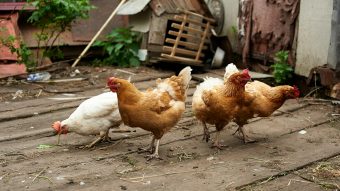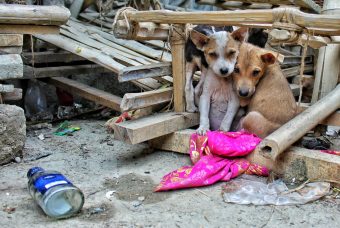We are still getting used to the absence of the purple cow from the packaging of popular chocolates and the faces of Gerda, Muccha and Marisa, wondering if their predecessor went on vacation to Hawaii, hiked the Himalayas, or is being trained for space travel. As part of a campaign to move from Milka to the real deal – Milka cows, alpine farms are presented as pretty idyllic places, so much that the negative connotation of “milking someone for something” is erased from my mind. However, the health and well-being of animals on many farms are not in a great state. All the more…

The European Union is financing the project “Reinforcement of Animal Health and Welfare” in Serbia with the aim of “recasting” our legislation based on the rules and standards of the European Union. The positive impact of its implementation will not only be felt by chickens, sheep and other farm animals, but also by the economy and the environment. “Economy will benefit from the fact that the consumption of AW friendly products is generally growing all over the world, even though they cost more than the standard products. Yet again, this is just one of the confrontations of intensive versus extensive farming. Raising animals humanely can reduce the use of feed, fuel and water compared to intensive farming, therefore reducing costs and pollution. So, the benefits are both economic and environmental,” project leader Petras Maciulskis explained at the beginning of our conversation.
Animal welfare is a complex area that, in addition to the those mentioned above economic and environmental, includes a scientific, ethical, cultural, social, religious and political dimension, based on the belief that animals are sentient beings. Caring for them involves considering the conditions that they are kept in – whether on a farm, as a pet, in zoos or circuses, slaughtered and used in research, and how people’s activities affect species’ well-being and survival.
Animal welfare involves the physical and mental state of an individual animal concerning the conditions in which it lives and dies. Animal welfare in our country is legally defined as providing the conditions in which an animal can fullfil its physiological and other needs inherent in its species, such as feeding and drinking water, accommodation, physical, psychological and thermal comfort, safety, the manifestation of behaviour patterns, social contact with animals of the same species and the absence of unpleasant experiences, such as pain, suffering, fear, stress, illness and injury.
In focus:
- There’s No Place Like… Container
- About Creators and Other Customers
- Obverse and Reverse of Electric Power Sector

In order to get scientific knowledge on whether the situation on the ground meets the prescribed ideal – but also how to bring the Serbian prescribed ideal closer to the European one – the plan is to involve all stakeholders. If there is any need for corrective action, they will be implemented if resources are sufficient, announced Maciulskis.
The European Union project will not neglect those animals that we, as a society, but also as individuals have neglected – stray dogs. Many countries have successfully solved this problem, and a particularly glaring example comes from the Netherlands, which has homed all of its street dogs. The moment you step out of the house you hear barking and that will infallibly tell you that you are far away from Amsterdam, and I asked my interlocutor if we will ever be closer to it and how. “In general, we could say that southern Europe and countries in the Balkans have more problems than northern European countries and Scandinavia. Stray, or more correctly free-roaming dogs, is then, above all, a matter of cultural habits and to change them it takes time and investments. The key elements are responsible ownership of dogs and the promotion of adoption from kennels,” he said, emphasising the importance of a comprehensive approach.
Prepared by: Jelena Kozbasic
This article was published in the new issue of the Energy portal Magazine NATURAL RESOURCES, march – may, 2020



